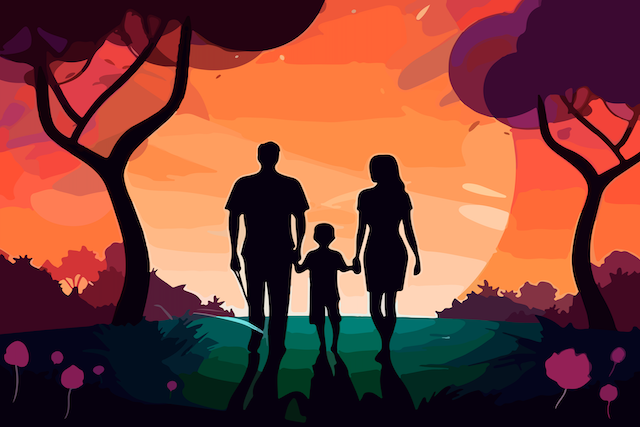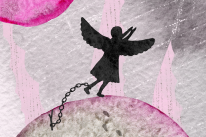
“I’ve learned that you can keep going long after you think you can’t.” ~Unknown
As far back as I can remember, I have always wanted to be a mom. I held onto the belief that my life wouldn’t feel truly “complete” until I had children.
This dream finally came true in 2010 when I was twenty-seven years old, when my son, Logan Patrick Arnold, entered the world. The moment I laid eyes on him, I sensed something was different about him. And though it might not sound flattering, he looked more like a middle-aged man than a Gerber baby.
Upon closer examination, the doctors discovered several abnormalities. Logan had upturned earlobes, and while some suggested it was due to his fetal positioning in my petite belly (I’m just 5’1″), deep down, I knew it wasn’t the case. Logan also exhibited an unusually pointed chin, a wide nose bridge, and eyes set farther apart than usual.
People often speak of a mother’s intuition or maternal instinct, and mine kicked in at that moment. Something was wrong, and I knew it was serious. Although others may have shared similar thoughts, we all kept our concerns to ourselves, perhaps out of fear of the unknown.
As the months passed, Logan failed to reach the typical infant milestones. His body remained rigid, and his tiny hands were perpetually clenched into fists. He couldn’t grasp toys or sit up on his own. Even as first-time parents, we understood that this wasn’t normal.
Fast forward about nine months, and my husband was typing phrases like “upturned earlobes, wide nose-bridge, pointy chin” into a Google search. He exclaimed, “Jackie, you need to see this!”
I had no idea what to expect on that screen, but I could never have imagined staring at a child who bore such a striking resemblance to Logan that they could have been siblings. It was an uncanny resemblance. I whispered, “That’s Logan.”
My husband had stumbled upon a website displaying pictures of children with Mowat-Wilson Syndrome, a condition discovered by Dr. Mowat and Dr. Wilson in 1997, with only about 500 diagnosed cases worldwide.
I clicked frantically to see more pictures. Every child could have been Logan’s sibling, sharing the same facial features and bone structures. We had found our answer.
We searched for more information, which would change our lives forever. I distinctly recall reading the words “moderate to severe intellectual disability” and “non-verbal.”
My heart sank. Did this mean my child would never speak, not even a simple “hello” or “I love you, Mama”? I was devastated.
It’s often said that “life throws you curveballs,” but this was one I hadn’t expected and certainly wasn’t prepared for. The beautiful life I had envisioned for Logan was going to be nothing like the one I had planned.
The years following Logan’s diagnosis were filled with doctor’s appointments, therapy sessions, school meetings, and anything else we could do to aid his progress and growth.
Back then, we were merely trying to survive: eat, sleep (very little), work, and do everything we could for Logan, repeating the cycle endlessly. Looking back, I’m not sure how we made it through, but we did.
And you know what? Our life is still beautiful.
Logan is a thriving non-verbal thirteen-year-old who adores school and his sister Lucy and would cherish nothing more than cuddling on the couch while we read him books and watch The Wiggles on TV. Life is pretty good for Logan.
And it’s pretty good for us too. No, this isn’t the life we had planned, but it’s our life, and now we couldn’t imagine it any other way. Logan’s disability opened us up to a whole new world of people and experiences we never would have known otherwise.
He’s taught us about unconditional love and finding patience when you think you’ve exhausted it all. Logan does everything in his own time; he sat at fifteen months, crawled at two-and-a-half years, and walked at five. Those milestones, achieved through hard work and countless hours of therapy, were all the sweeter because of the effort.
When our daughter Lucy was born and effortlessly reached those milestones, we were in awe of what a tiny human could do without being “taught.” It made us appreciate the little things in life even more.
Reflecting on the past thirteen years evokes a whirlwind of emotions. The journey was messy, ugly, amazing, and joyful all at once. But it has shaped us into who we are today—better people and better parents.
If I could travel back in time and offer some advice to that sleep-deprived twenty-seven-year-old mom, it would be this.
1. It’s okay to grieve and be sad. Receiving a diagnosis like ours can feel like a death in many ways. Embrace your emotions; you don’t always have to be strong.
2. Understand that this child will change your life and make you a better person. Seek out supportive friends who understand your journey.
3. Let others help you. When someone offers assistance, accept it. You don’t have to carry the burden alone.
4. Communicate with your partner. You will process your emotions differently, so be open and honest with each other.
5. This isn’t a race or a competition. Take it one day at a time; you are doing enough, and you are enough.
6. You will get through this. You are stronger and more resilient than you ever thought possible.
Receiving a diagnosis of any kind is life changing. If you know someone going through this experience, reach out to them. Ask if they are okay, like really okay.
And when they turn down your offer to help, step in and do it anyway…let them shower while you watch their child, bring them dinner, mow the grass. Just be there and show your support. These simple gestures will mean the world to them.
About Jackie Arnold
Jackie Arnold is a health coach for special needs moms. She understands firsthand the physical challenges and emotional struggles of this demanding role and is on a mission to help other special needs moms prioritize their well-being, cultivate resilience, and create a healthier life. She helps them find the time, energy, and resources to put themselves back at the top of the priority list. Visit www.jackiearnoldcoaching.com to learn more.












 Though I run this site, it is not mine. It's ours. It's not about me. It's about us. Your stories and your wisdom are just as meaningful as mine.
Though I run this site, it is not mine. It's ours. It's not about me. It's about us. Your stories and your wisdom are just as meaningful as mine. 